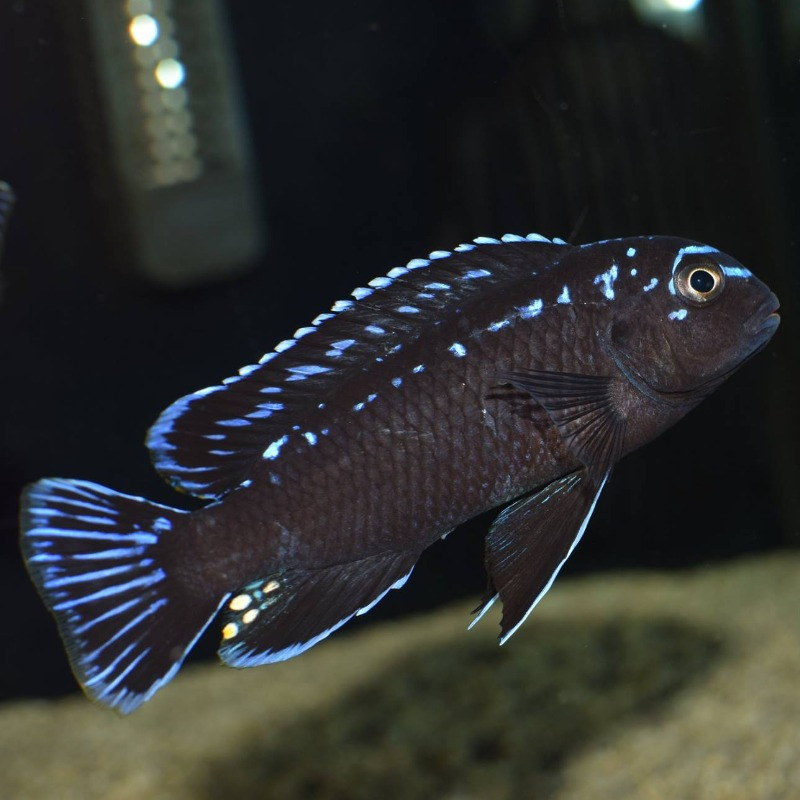More info
Pseudotropheus interruptus, commonly known as Chiwi Rocks, is a fascinating and vibrant species of cichlid that hails from Lake Malawi in Africa. This fish is highly popular among aquarium hobbyists, admired for its striking colors and intriguing behavior.
Chiwi Rocks, like other cichlids, display sexual dimorphism, where males and females exhibit different color patterns. The males typically boast vibrant hues, such as electric blue on their bodies and fins, while females tend to be less colorful, displaying shades of brown or gray.
Keeping Chiwi Rocks in an aquarium setup is an exciting endeavor, but it requires careful consideration. These cichlids are known for their territorial nature, so it's essential to provide ample space and hiding spots to reduce aggression among tankmates. A tank of at least 75 gallons, decorated with rocks and caves, mimicking their natural habitat, is recommended.
The water parameters must closely match their native Lake Malawi conditions, with a pH level between 7.8 and 8.6 and a temperature range of 75 to 80 degrees Fahrenheit (24 to 27 degrees Celsius). Regular water changes are crucial to maintain water quality and keep the fish healthy.
Feeding Chiwi Rocks is not a complicated task, as they are omnivorous and readily accept high-quality cichlid pellets, flake food, and frozen or live foods like brine shrimp and bloodworms. Providing a varied diet helps promote their vibrant colors and overall well-being.
Breeding Chiwi Rocks can be rewarding but also challenging. Males are generally more aggressive during the breeding process, so it's essential to observe the interactions carefully. When a compatible pair forms, the female lays her eggs in a carefully chosen cave, and the male fertilizes them. Once the eggs hatch, the parents guard the fry diligently, and their territorial nature makes it necessary to separate them from other tank inhabitants.
In conclusion, Pseudotropheus interruptus, or Chiwi Rocks, is a captivating and colorful cichlid species from Lake Malawi. With their dynamic behavior and stunning appearance, they can be a prized addition to a well-maintained and adequately equipped aquarium. Just remember to provide them with the appropriate environment, compatible tankmates, and a balanced diet to ensure their happiness and longevity in captivity.

